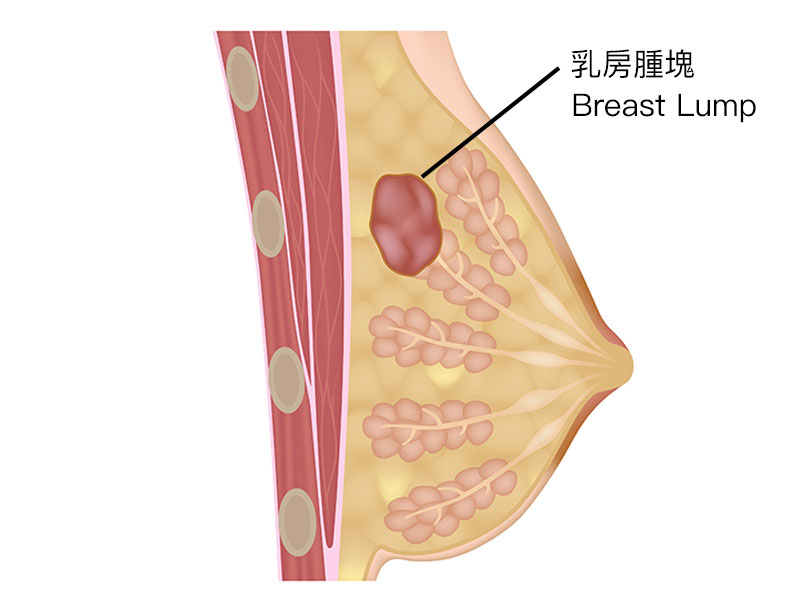Breast Lump Excision

Breast tumors are divided into benign and malignant. Existing clinical methods used for breast cancer screening and diagnosis, which including X-ray mammography, ultrasound etc. However, malignant tumors are cancerous and aggressive because they invade and damage surrounding tissue. When a tumor is suspected to be malignant, doctor will perform a biopsy to determine the severity or aggressiveness of the tumor. The operation is usually performed under a general anesthesia care (MAC).
Preparation
- Remove any make-up, nail varnish and jewellery. Rings and earrings that you'd prefer not to remove can usually be covered with adhesive tape. No eating for 6 hours before the surgery.
- The doctor will explain the procedure and you can raise your concern during the time. You are required to sign the consent letter afterwards to acknowledge that you fully understand the details and agree to have the procedure performed.
Procedure
- You will be administered with intravenous sedation and fall asleep.
- Lumpectomy will be performed and a cut slightly bigger than the lump is made over or near the lump, allowing it to be removed completely. There will be biopsy examination afterwards.
- The wound will be sutured with absorbable stitches.
- The procedure normally takes about 45-60 minutes.
Follow-up and Recovery
- The anaesthesia and sedation may temporarily affect your co-ordination and reasoning skills, so you should avoid driving, drinking, making important decisions or signing legal documents for 24 hours afterwards.
- You can return to simple activities the following day and should have more exercises for the hand of which operation has performed on that side, which helps to reduce numbness.
- You should wear supportive but wireless brassieres.
Risks after the procedure
- Breast lump removal is generally a safe procedure. Most of the side-effects are mild and temporary.
- Examples of side-effects include feeling sick as a result of the general anaesthetic or painkillers.
- Bruising and some swelling are common after breast lump removal. The skin around the operation site can change colour, and sometimes a lump will appear under the scar – both of these should disappear within gradually.
- The possible complications of any operation include an unexpected reaction to the anaesthetic, excessive bleeding, or a blood clot in a vein in the leg (deep vein thrombosis).
- The main complication specific to breast lump removal is infection, which can usually be treated with antibiotics. Signs of infection include bleeding, redness, high temperature, increasing pain, discharge or hardness in the breast.
【Check Pricelist】

 3405 8288
3405 8288